Baltimore, Maryland
Problem:
Oil-dependent transport moves a ton to move a person in congested traffic.
Traffic costs the people of Maryland $18.4 billion per year
- $11.2 billion on foreign oil, 3.8 billion gallons that produce 20 pounds of CO2/gallon, or 76 billion pounds.
- $5.4 billion on accidents
- $1.8 billion on congestion, about $.8 billion per year on the Baltimore Beltway alone. This is about 47.9 hours of delays per motorist per year. Baltimore One Of Worst Traffic Cities In US: Report
Solution:
JPods will invest private capital to build cleaner, faster, safer, and more affordable urban transportation networks in Maryland. Jobs will be created in Maryland to manufacture, build, and operate solar-powered mobility networks.
Recover $9 billion per year by moving only the person and freight above the roads. Solar-powered transportation is safer, faster, cleaner and affordable. On-demand mobility regardless of age, ability or wealth. Life requires energy. Energy self-reliance. Link to two page summary, Print Quality or Email Quality.
Execution:
- Elon Musk gets OK to begin digging for Hyperloop project in Maryland
- Md. First State To Grant Conditional Permit For Building Elon Musk’s Hyperloop
- Elon Musk to start hyperloop project in Maryland, officials say
- Physics: It costs less to move less.
- Concept: Computer controlled, ultra-light JPods rail networks move people and cargo on-demand; a Physical-Internet; a circulatory system for an economic community.
- Legal: Pass the Performance Standard Law of Massachusetts Senate Bill #1837. Build with private capital and exceed 5-times the energy efficiency of highways.
- Market Niche: On-demand mobility for highly repetitive, commuter-range transport of cargo and people.
- Safety: > 2,000 times safer than cars.
- Emissions: Zero.
- Congestion: Zero.
- Efficiency: 200 watt-hour per mile. Mobility savings are amplified by the 6x Net Energy of solar over oil.
- Power: Solar collectors gather 25,000 vehicle-miles of power per mile of rail per day. Distributed transportation grid harvests distributed natural power.
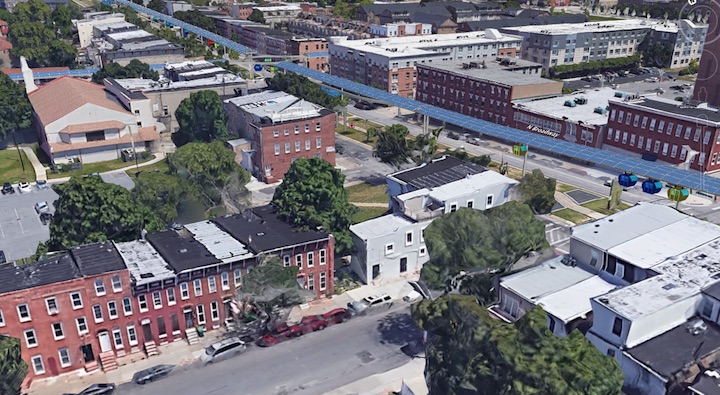
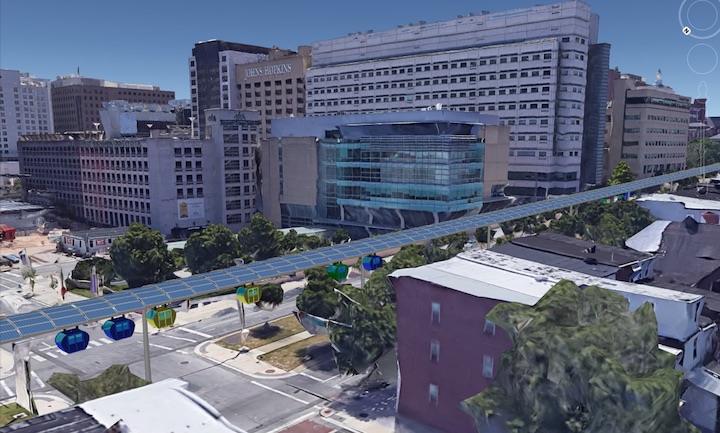
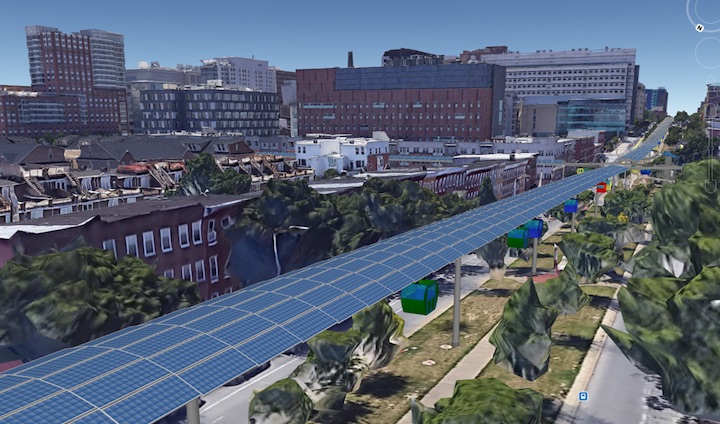
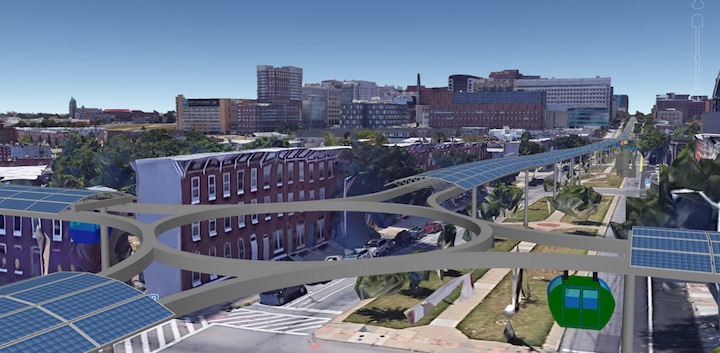
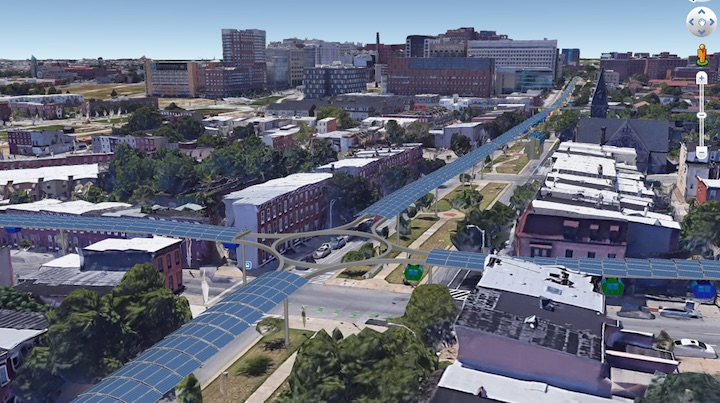
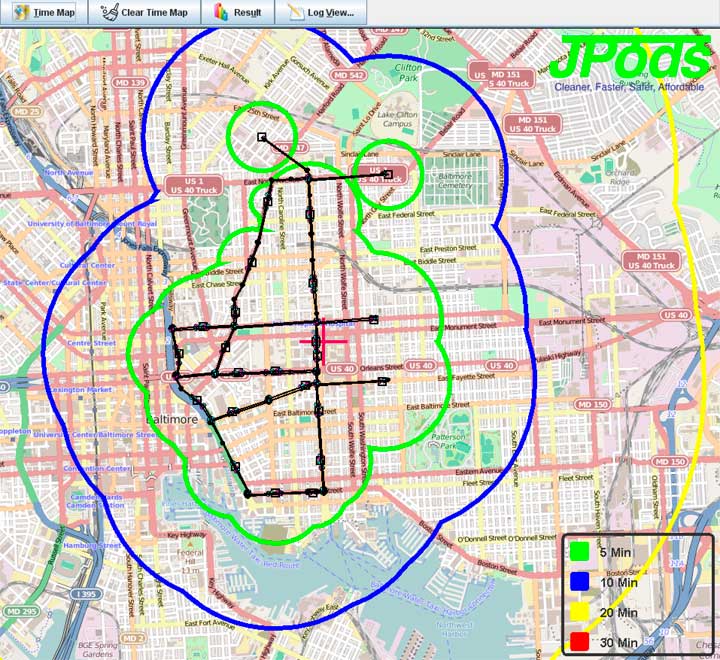
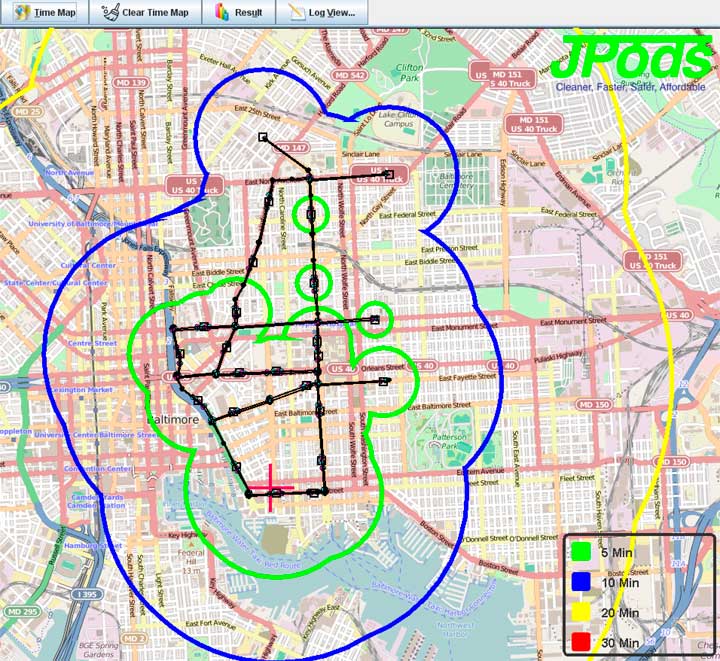
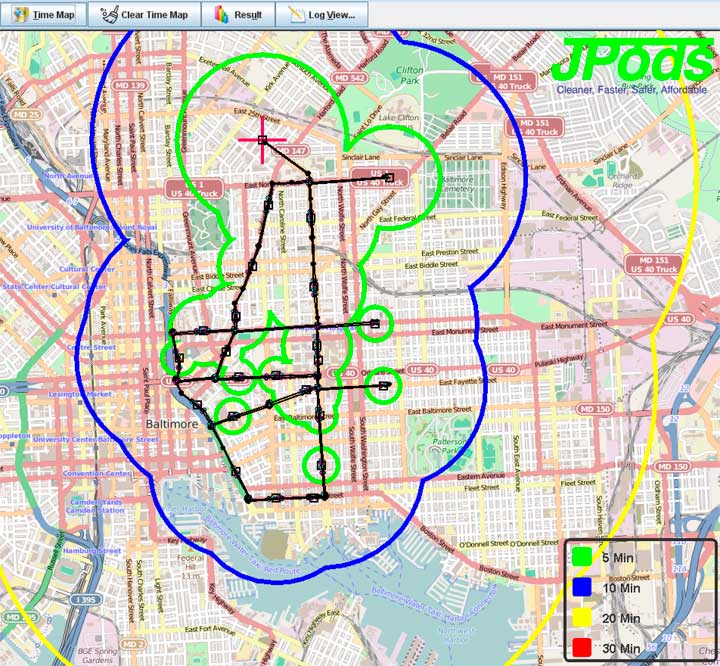
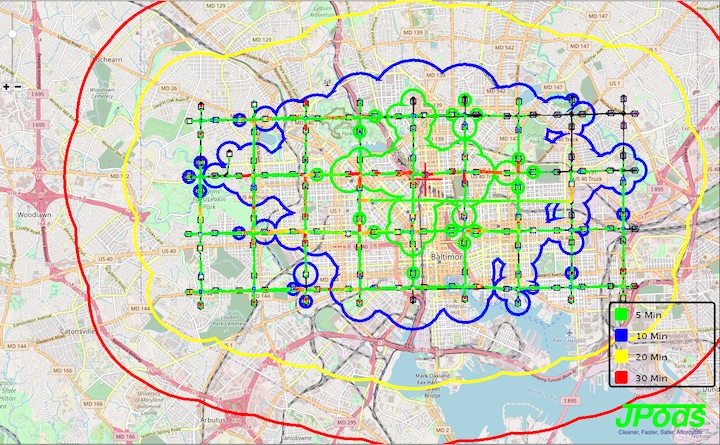
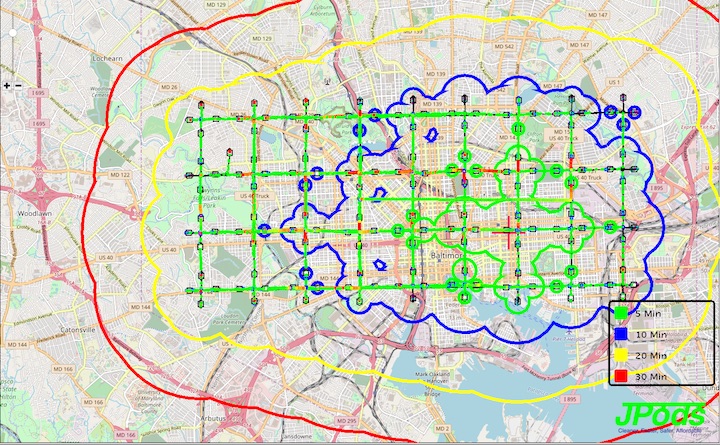
Parasitic Energy Ratio
This is a very simplified way to think about waste based on the parasitic mass we are paying to move. By multiplying the applications of power (start-stops) times the kinetic energy of the moving mass divided by the payload mass the constants and velocity squared cancel to provide a relatively simplified formula.
Moving a two tons to move a person in repetitively start-stop traffic is very expensive, wasteful, and polluting

This is also a good way to understand the value of a gallon of gasoline. Steps:
- Park your car in your driveway empty of gasoline.
- Put in one gallon.
- Get 5 of your strongest friends.
- Drive until you run out of gas.
- Push your car home.
A barrel of oil, 42 gallons, is the equivalent of 12 energy slaves.
There are several ways to look at paybacks from cost per passenger-mile to safety to capacity to time savings. As a quick summary here is a graph of costs per passenger-mile based on MassDOT data:
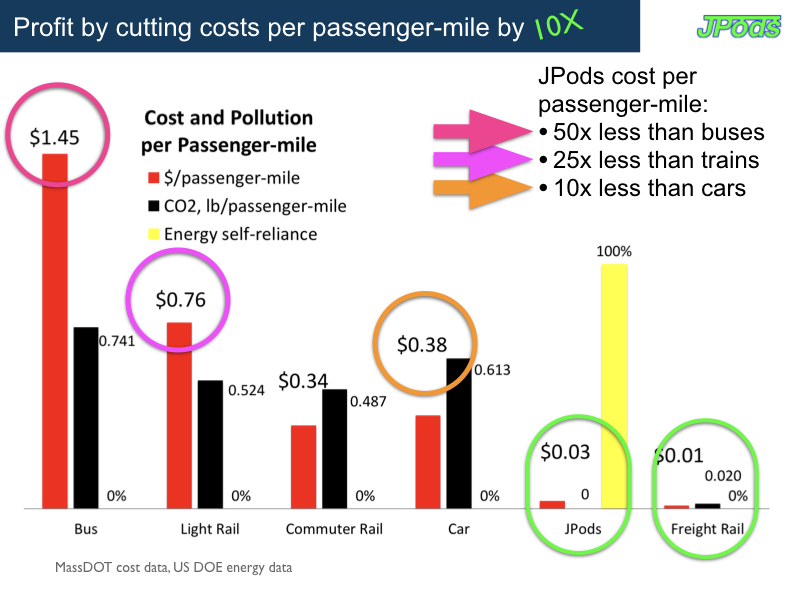
Aside from price 3 cents per passenger-mile, JPods packet-switched networks are faster, safer, cleaner, and more affordable. JPods builds on:
- The efficiency of freight railroads (476 ton-miles per gallon).
- The zero-injury since 1975 safety record of Morgantown’s Personal Rapid Transit (PRT) network.
- The on-demand service of the Internet, by building the Physical Internet®.
passenger-mile cost
Passenger-mpg
Seats/hour/lane
Headway
Speed mph
Mode-Deaths/Year
JPods/PRT
$0.03
264.4
28,800
.5 sec
30
zero since 1975
Light Rail
$0.76
38.2
1200
10 min
24
743
Cars
$0.38
32.6
4800
3 sec
18
34,624
Buses
$1.45
27
600
5 min
8 to 12
44.2
////////////////////////////////////////// Law BEGIN ///////////////////////////////////////////
THEREFORE, BE IT RESOLVED,
Non-exclusive access to rights-of-way governed by this jurisdiction will be granted to transportation systems providers meeting the following free market principles:
(1) Privately funded construction, and
(2) Privately operated without government subsidies, and
(3) Exceed 120 passenger-miles per gallon, or equivalent efficiency, and
(4) Exceed safety performance of transportation modes already approved for use.
(5) For above ground networks, gather at least 2 megawatt-hours of renewable energy per average mile of network per typical day.
THEREFORE, BE IT FURTHER RESOLVED, Regulation of free-market innovations shall be based on:
(1) System design, fabrication, installation, safety, insurance, inspection practices shall be compliant with the ASTM International, Committee F24 on Amusement Rides and Devices, and
(2) Environmental approvals will be granted based on a ratio of energy consumed per passenger-mile of the innovation versus transport modes approved to operate in the rights-of-way, and
(3) All taxes and fees assessed on the transport systems providers, passengers and cargo shall be limited to 5% of gross revenues and paid to the aggregate rights-of-way holders by transportation systems providers.
(4) Specific networks franchises will be governed similar to how communications networks are governed.
/////////////////////////////////////////// Law END ///////////////////////////////////////////
Shaxian, China agreement to build JPods Solar-powered Mobility Networks from Bill James on Vimeo.
Tulsa, OK Example JPods Network from Bill James on Vimeo.
Oliver_2017-07-03 from Bill James on Vimeo.
